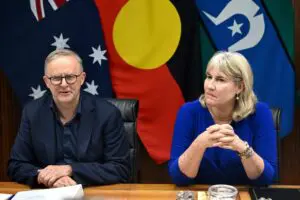New South Wales network company TransGrid has taken steps to assuage concerns about the community and environmental impacts of Snowy 2.0, with the release of new route options for the massive project’s $2.1 billion transmission backbone, known as HumeLink.
HumeLink is a new 500kV transmission line that will connect the federal government-owned Snowy 2.0 project to the main grid in New South Wales and deliver its output to where it might be useful. It will also link Wagga Wagga, Bannaby and Maragle.
As RenewEconomy has reported, new transmission lines are emerging as one of several key new battlefronts in the shift to renewable energy, pitting locals and green groups against major and critical new transmission infrastructure projects whose corridors inevitably take in state and national parklands and/or prime farming regions.
In the case of HumeLink, the project has met with significant opposition both from affected locals and landholders as well as from environmental groups, who have called for TransGrid to consider using underground transmission lines, to limit damage to the Kosciuszko National Park.
In a statement on Friday, TransGrid’s executive manager of major projects, Sean McGoldrick, said the network operator had been examining options to use more public land where it was available and to avoid the airport.
The new options proposed include a new route within Green Hills State Forest which moves proposed transmission onto public land and away from privately owned farmland, as much as possible, and another option for the route east of Batlow to run north of Blowering Reservoir, in a bid to avoid Tumut Airport.
“Engagement with Snowy Valleys Council, the Rural Fire Service and the local community indicated real concern that the transmission line could impact the expansion and operation of Tumut Airport, especially during bushfire season, and so network planners have examined a different option, north of Blowering Reservoir, to the one previously proposed,” McGoldrick said.
“In addition, consultation with landowners and other stakeholders has led to an option utilising more public land in Green Hills State Forest, east of the Yaven Creek community.”
McGoldrick said local landowner consultation would continue on HumeLink and TransGrid would “propose new transmission on public land wherever possible, or in parallel to existing infrastructure.
“We will continue to meet with landowners and discuss ways we can consider route options that minimise disruption to them, to their properties and their farm businesses,” he said.
Transgrid has also enlisted the help of former NSW Commissioner for Fair Trading, Rob Stowe, to lead the company’s community engagement on planned transmission infrastructure projects.
A meeting is currently being planned for later this month with landowners in the Kyeamba area, where TransGrid is working to narrow the proposed route corridor in response to “intensive consultation” with landowners.










